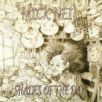Hello, and welcome to my first lesson for Guitar Nine! In this lesson, I hope to show you a technique that I personaly find very challenging, but rewarding just the same.
A quick note on sweeping.
If you've never done any sweep picking before, there's no better time than now. The simple theory of sweeping is that all ascending notes are played with a single down stroke, or "sweep", and all descending notes are picked with a single upward stroke, or "sweep" Almost like strumming a chord, but notice that I said the sweeping motion is almost like stumming.. Sweeping involes a much more controled motion of the wrist. But if you can pick any scale at all, then the position of your wrist is where it needs to be, and the sweep technique is a natural progression. A good tip for getting the feel of the sweep is to start out with sweeping chords up, and down. Sweep each note slowly, and as you sweep each note, have the pick resting on the next string before you sweep it.
This technique involves a typical up and down sweep method for the picking hand, but for the fingering hand it is more difficult.
A typical single position, two octave major or minor arppegio fingering has a feel and finger movement that I think is very natural, like laying your hand on the fretboard to play the most typical bar chord. But not with my sweeping pentatonics.
In the fingering technique of this lesson, we'll be working with the two first position minor and major pentatonic positions in A, with the root notes on the top string, at the 5th fret.

In these pentatonic scale pattens, there are two notes per string to play as you ascend and descend the scale. So one simple philosophy of sweeping a pentatonic is to alternate the notes of each string as they occur naturally in the scale pattern, by playing one note per string, just like an arpeggio. We will do this two ways by creating two patterns per scale, that originate from the two notes on the top string in each scale. So what I mean by alternating the notes played on each string is to do it with a finger movement that indeed imitates a walking movement. This is the fingering theory for the whole lesson. Furthermore, this technique lends itself to writing licks that can be sequenced, which I've included examples of, so you can wail my sweeping pentatonic licks all day! But hold on Huckleberry, if you haven't done this before, you will be worn out in no time! These exercises will bring your dexterity to a new level. So go for it!
In the first example, we'll start with the A minor pentatonic, beginning on the top string root note, with your first finger. Start slowly to get the feel of the walking movement, and check the sound clips to get the sound of the licks in your head.
MP3 - Example 1
Example 2 is the endless up and down sequence of the pattern. This is where the wood shedding begins. Pay attention as you shift your sweeping motion from down, to up, and vise versa, as this is biggest challenge for the picking hand .Try to keep it smooth. I've included two sound clips for each of the sequencing examples. One as a tab demonstration, and the other that's up to speed.
MP3 - Example 2 - Slow
MP3 - Example 2 - Fast
Example 3 is the second fingering for the A minor pentatonic that starts on the second note of the top string, with the fourth finger, at the 8th fret. Now you can see how I derived the second pattern from the same scale, by using the same walking finger pattern theory. Observe that we're now using the notes of the scale that we excluded in the first two examples. We will apply this same principle to the major pentatonic.
MP3 - Example 3
Here is the sequence example.
MP3 - Example 4 - Slow
MP3 - Example 4 - Fast

Now for the major pentatonic. This pattern/sequence is one of my favorite licks, because it's a bit easier to do, and sounds very convincing played higher up on the fretboard with a neck pickup in other keys. Once you get this pattern down, go ahead and try it on say, the15th fret, in G Major for example! It begins on the root note, with the second finger on the 5th fret.
MP3 - Example 5
Here is the sequence example.
MP3 - Example 6 - Slow
MP3 - Example 6 - Fast
At last we have the alternate pattern/sequence for the major pentatonic. It begins with the fourth finger on the 7th fret. You know what to do.
MP3 - Example 7

Here is the sequence example.
MP3 - Example 8 - Slow
MP3 - Example 8 - Fast
This concludes the lesson. Tune in next time, where we'll take this lesson to the next step.
Mick Neil was inspired to play guitar in 1982, at the age of 12, after hearing Eddie Van Halen's "Little Guitars I and II".
Growing up in the 80's, Mick was fond of all the popular guitar rock bands of the day, which no doubt had had it's influences in the areas of lead guitar, and complex rhythm playing.
Mick has been playing a 7-string guitar since 1999, which has been his signature ever since. He plays hard rock, metal, classical, and fusion guitar styles.
